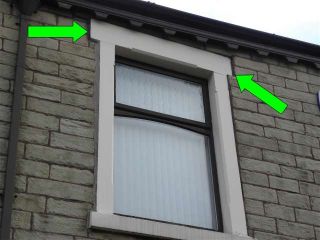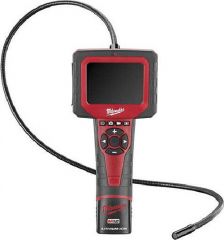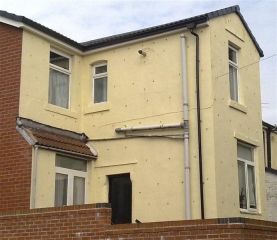Cavity wall ties and failure
Ever since cavity walls were used to build properties it has been common to use cavity wall ties to hold the outer skin and the inner skin of the property together. When wall ties are used in this way it makes a much stronger structure which can cope and help to distribute compressive loads. Wall ties are often made of mild steel which means that eventually they will corrode and fail. In some older properties slate was used to tie the inner and outer skins together, although metal wall ties are much stronger the slate will at least never corrode.

The stone window surrounds on this mid terraced house have clearly moved over the years. This house has been like this for over 20 years and could have been caused because the cavity wall ties have eroded. In this case it is not practical to fit remedial wall ties as the damage has already been done.
The only sensible option here is to erect scaffolding at the front of the property and pull down the outer skin, then rebuild it whilst fitting new cavity wall ties. This problem could probably have been avoided if the wall ties had been replaced earlier. Stripping down and rebuilding the front of this wall will cost in the region of £1500-£2000

When houses were first constructed using cavity walls the wall ties were embedded directly into the mortar, which is still common practice today but today stainless steel is used instead of mild steel which means that the wall ties should never fail and require replacing. Mild steel wall ties could corrode in as few as 25 years in the right environment, this means that the wall ties could completely corrode leaving the inner skin and outer skin as two separate structures. This means that the outer skin could bow or bulge in areas which means in extreme cases that the outer skin of the building may require knocking down and re-building.

If you suspect that the cavity wall ties in your property or a property that you are thinking of buying it is essential to get them checked by a reputable firm that specialises in this type of survey. If a wall is bulging or bowed you should seek the advice of a structural surveyor. Some firms use a special metal detector to check for the wall ties, but this does not prove what condition the wall ties are in and so an inspection camera is much better in my opinion as a small hole can be drilled in the cavity and the camera can be used to inspect the condition of the wall ties.

If it is established that the wall ties do need replacing you have a couple of options. You can buy the wall ties yourself and install them as per the manufacturers instructions or you can employ a firm to install the ties for you. There are a few different types of replacement wall ties available and so the correct type need to be chosen for the type of property that the ties are being installed into, for example some wall ties that rely on expansion to work cannot be used in soft bricks. The instructions that come with the wall ties should specify the required spacing and also have detailed installation information. If you choose a firm to replace the wall ties ensure that they have a good reputation and that you get an insurance backed guarantee. If you need the wall ties replacing as part of a mortgage survey you will have to ensure that the firm provides all the paperwork that the mortgage company require.




